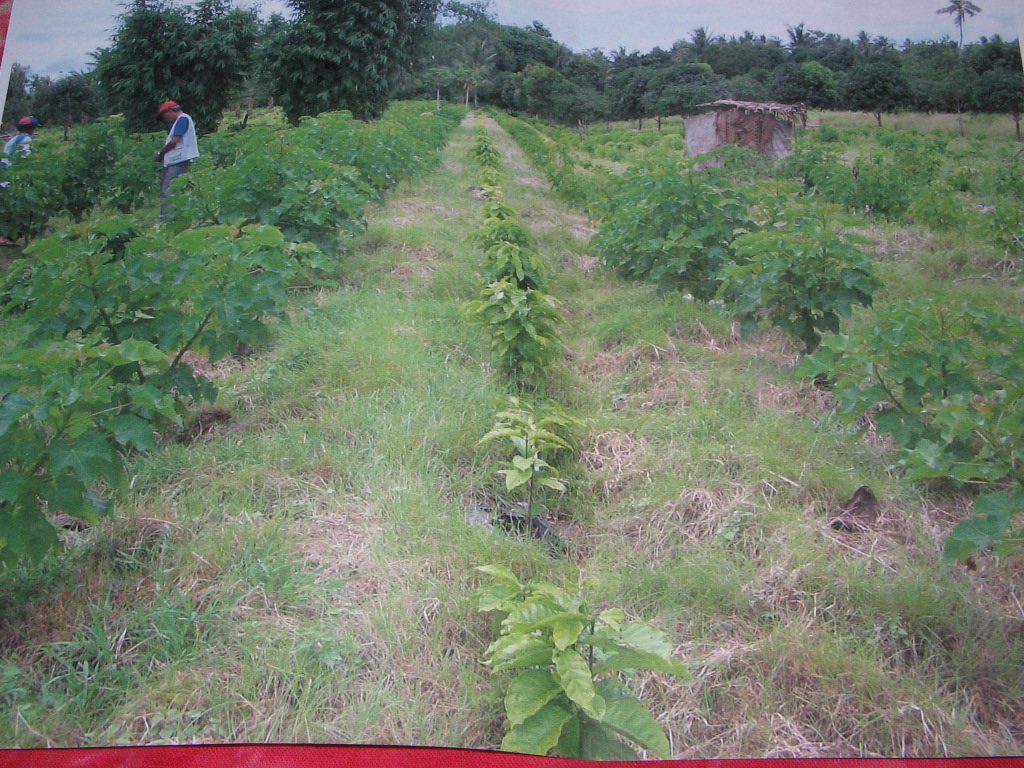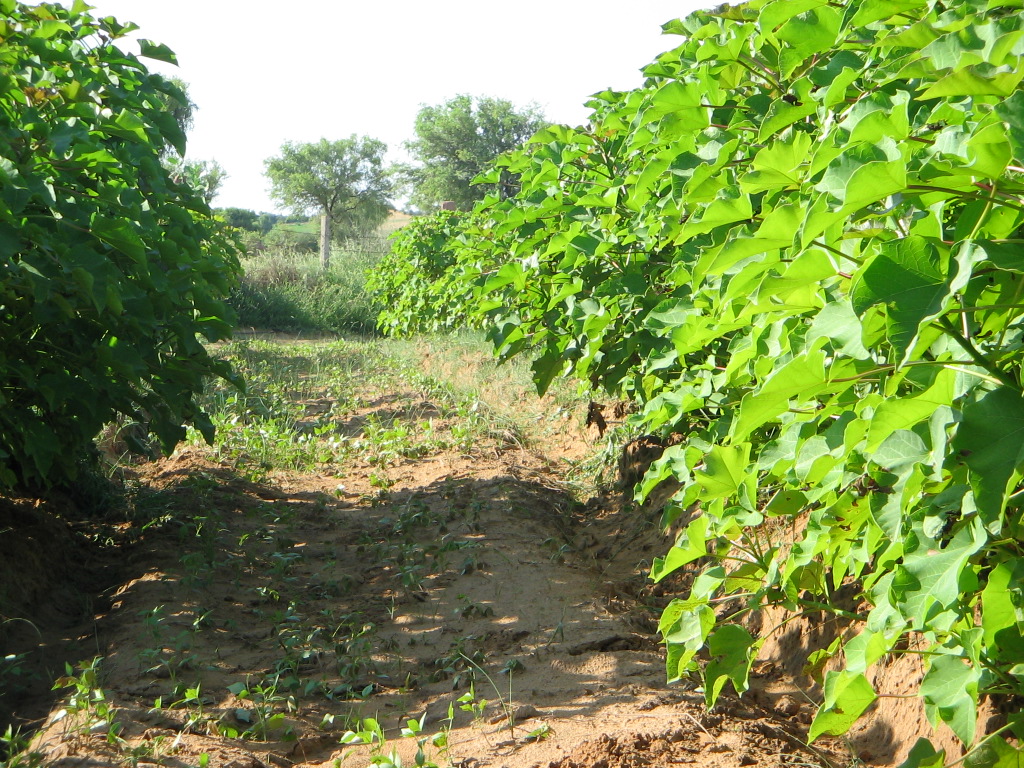 |
|
|||
|
|
| |
 |
|
When two or more crops are grown simultaneously in the same field, this is called intercropping According to the topography, soil profile and prevailing agroclimatic conditions in an area, Jatropha can be combined with other suitable species comprising the agricultural, horticultural, herbs, pastoral and/or silvicultural components to result in an ecologically viable, economically profitable and socially acceptable agroforestry system. By evolving, promoting and adopting Jatropha based intercropping systems it is possible to improve the socioeconomic conditions in rural areas and to transform the National energy scenario and the ecological landscape. Social & economic advantages of multiple cropping systems: Dependence on only crop is avoided. Less needs to import energy. Reduction in the outlay for fertilizers. There is much greater flexibility of the distribution of labor. Possible to recover investments in much less time. Availability of harvest over a much longer period of time. Can occupy much more labor. The farmer of little economic resources can produce a large variety of useful products. Promote a return to the land. Components can constitute a type of "savings" for the future.SRIPHL has tried, applied and developed Some inter croping systems for both wastelands and cultivable lands as outlined below:FOR WASTELANDS: Model (I) Hedgerows of Jatropha with Glyricidia and Subabul Model (ii) Jatropha intercropped with grasses, tubers and vegetables Model (iii) Jatropha mixed with fruit trees Model (iv) Jatropha in mixed plantation with Teak / Neem / Karanj / Subabul FOR CULTIVABLE LANDS On irrigated farmlands Model (i) mixed with one or more of the following species, grown at the spacing indicated against each species:-Gmelina arborea (Gamhar) 8mX8m, Dalbergia sissoo (Sheesham) 5m X 4m, Azadirachta indica (Neem) 7m X 5m, Tectona grandis (Teak) 4m X 4m, Emblica officinalis (Aonla) 5m X 3m, Eucalyptus camaldulensis 3.5m X 2m and Moringa oleifera (Munga) 3m X 3m Model (ii) intercropping vegetables such as red and green peppers, tomatoes water melon etc. that would provide additional income for the farmers. Model (iii) intercropping with important medicinal plants For this purpose Jatropha curcus is the ideal plant to give shade to shade loving plants and provide a base for the climbers Selection of the climber is done according to the climatic condition of the regions. Mainly, the following climbers are common for every/region:
Selection of shade crops:
Model (iv) Jatropha can be intercropped with medicinal plants like Asparagus racemosus (Shatawar) and Commiphora mukul (Gugul) Model (v) Shankhpushpi are effective in promoting the growth of Jatropha curca Intercropping Model (vi) Patchouli and coleus are suitable and successful intercrop In Madagascar, the plant is used as a support for vanilla On drier farm lands Interplanting of Jatropha can done with Mulberry . Combined with the petroplant - Jatropha, Ber and Lac constitute a profitable planting model. For Biofencing
{Our Book On Our "Jatropha Intercropping Technology" May Be Obtained For Details} |
© 2004- 2025 ABC-Advanced Biofuel center ,, All Rights Reserved |

 JATROPHA INTER - CROPPING TECHNOLOGY
JATROPHA INTER - CROPPING TECHNOLOGY